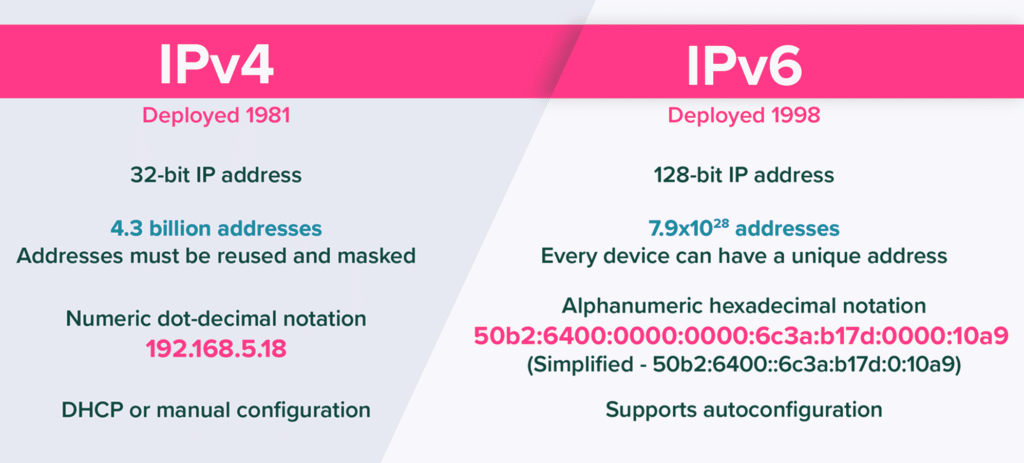Imagine waking up one day and discovering that no new devices can be connected to the Internet—no new phones, smart fridges, gaming consoles, or even security cameras. It may sound dystopian, but it’s a growing reality. The Internet is running out of IP addresses, and surprisingly, few people are talking about it.
IP addresses are like the digital DNA of the Internet. They’re essential for identifying and locating every device online—from your smartphone to the server hosting your favorite website. The problem? We’re still largely using a decades-old system known as IPv4, which has nearly maxed out its supply of unique addresses.
The good news? A newer system, IPv6, exists and could solve the crisis. But like many solutions to complex global problems, adoption has been slow. Let’s unpack why this issue matters, how it affects you directly, and what can be done.

How the Internet’s Address System Works
When the Internet was developed in the early 1980s, its architects created IPv4 (Internet Protocol version 4), which offers around 4.3 billion unique IP addresses. At the time, this seemed more than enough—no one anticipated a future where refrigerators, light bulbs, and even toasters would need to be online.
Fast forward to today, and we have:
- Over 5 billion Internet users
- Billions of Internet of Things (IoT) devices
- Expanding digital economies and smart cities
Each of these needs an IP address, and IPv4 simply wasn’t designed for this kind of scale.
We’ve Used Up Almost Every IPv4 Address
To delay the inevitable, Internet Service Providers (ISPs) and tech companies have used a workaround called Network Address Translation (NAT). NAT lets multiple devices share a single public IP address by using private IPs within a local network.
It works—kind of.
NAT introduces problems like:
- Lag and connection issues in online games
- Poor quality during video calls
- Difficulty with peer-to-peer services like torrents or VoIP
Worse, NAT complicates security, transparency, and the Internet’s overall architecture. It’s a temporary fix to a long-term crisis.
By 2011, the Internet Assigned Numbers Authority (IANA) had officially exhausted the central pool of IPv4 addresses. Regional registries followed suit over the next decade, marking a point of no return.

IPv6: The Future of the Internet
Enter IPv6 (Internet Protocol version 6)—a modern solution designed to solve IPv4’s shortcomings.
How many addresses does IPv6 provide?
Brace yourself: 340 undecillion (that’s 340 followed by 36 zeros). That’s enough to give every atom on Earth its own IP address, and still have some left over.
But IPv6 isn’t just about quantity:
- End-to-end connectivity without NAT
- Built-in security features like IPsec
- More efficient routing and data handling
- Improved mobility support for mobile networks and IoT
IPv6 makes it easier and faster for devices to connect directly to one another—ideal for smart homes, connected cars, and remote work technologies.
Why Hasn’t IPv6 Taken Over Yet?
If IPv6 is so superior, why aren’t we all using it?
Here are the biggest obstacles:
Cost of Infrastructure
Upgrading an entire network to support IPv6 can be expensive. ISPs and enterprises must replace or upgrade routers, firewalls, and software systems.
Compatibility Issues
Some older systems and applications don’t support IPv6. Businesses fear disruptions to operations and customer access during the transition.
Lack of Awareness
Many consumers and even IT professionals don’t realize there’s an IP address crisis. The urgency isn’t always obvious—until something breaks.
Resistance to Change
Change is hard. When NAT and IPv4 still “kind of” work, organizations may hesitate to overhaul functioning systems.

Real-World Impacts of Delayed IPv6 Adoption
Failing to embrace IPv6 fast enough could lead to:
- New devices struggling to connect to the Internet
- Increased costs as IPv4 addresses become scarce and expensive (some sell for $50+ each!)
- Slower Internet performance due to overused NAT layers
- Security vulnerabilities due to complex and patched-together solutions
Think of it like trying to build skyscrapers in a city that only has room for small houses. Eventually, progress stalls.
How We Can Speed Up IPv6 Adoption
We’re at a crossroads. To ensure a thriving Internet future, here’s what needs to happen:
For Businesses
- Audit current systems for IPv6 readiness
- Gradually replace incompatible hardware
- Train IT staff on dual-stack (IPv4 + IPv6) strategies
For ISPs
- Offer native IPv6 connectivity to customers
- Support dual-stack environments during transition
- Educate consumers on the long-term benefits
For Individuals
- Check if your devices (modems, routers) are IPv6-ready
- Use websites like Test-IPv6.com to check your connectivity
- Encourage your ISP to support IPv6
For Governments & Institutions
- Incentivize IPv6 adoption through grants or tax breaks
- Mandate IPv6 readiness for public infrastructure
- Support IPv6-based tech education and awareness campaigns
A Personal Take: My IPv6 Wake-Up Call
As a tech enthusiast and digital professional, I never gave much thought to IP addresses—until a few years ago when I was helping a client set up cloud services across multiple regions. We kept hitting weird latency and connection bugs. After digging deeper, we realized the issue was NAT-related congestion due to limited IPv4 addresses. Once we switched to IPv6-compatible systems, the performance boost was instant.
That experience was a wake-up call. The future really is IPv6—it’s not optional anymore.
Conclusion: The Future of Internet Connectivity Depends on Us
The Internet has quietly reached a breaking point. The Internet is running out of IP addresses, and it’s not just a technical problem—it’s a threat to innovation, connectivity, and digital equality.
IPv6 offers a clear, scalable, and efficient solution. But like any global change, it requires effort from all corners: governments, ISPs, businesses, and everyday users.
If we act now, the Internet can continue to grow and empower people around the world. If we delay, we risk an increasingly fragmented and sluggish network that struggles to keep up with tomorrow’s demands.
So the next time you hear about IPv6, don’t tune out. Lean in. Because the future of the Internet depends on it.




Leave a Comment